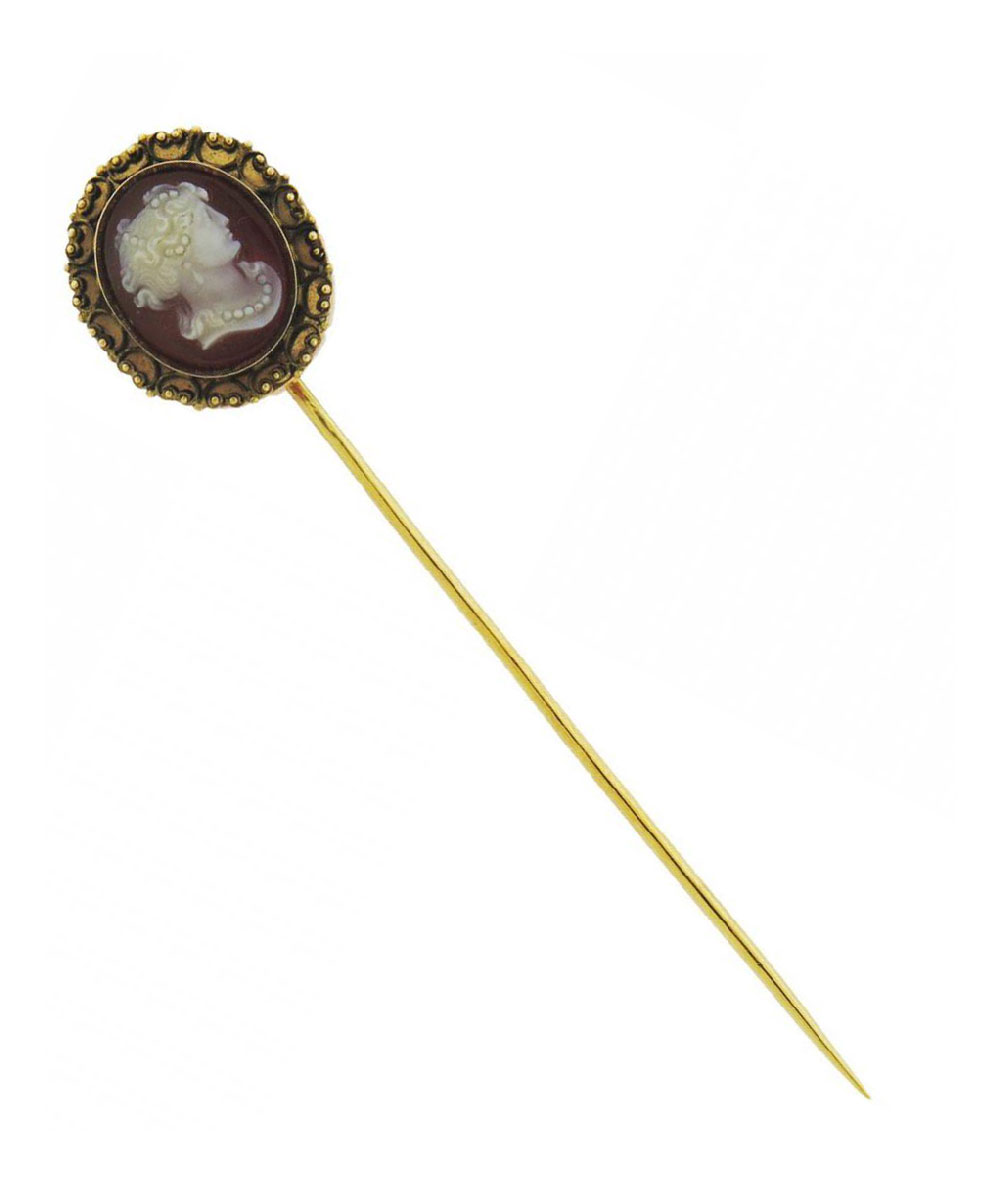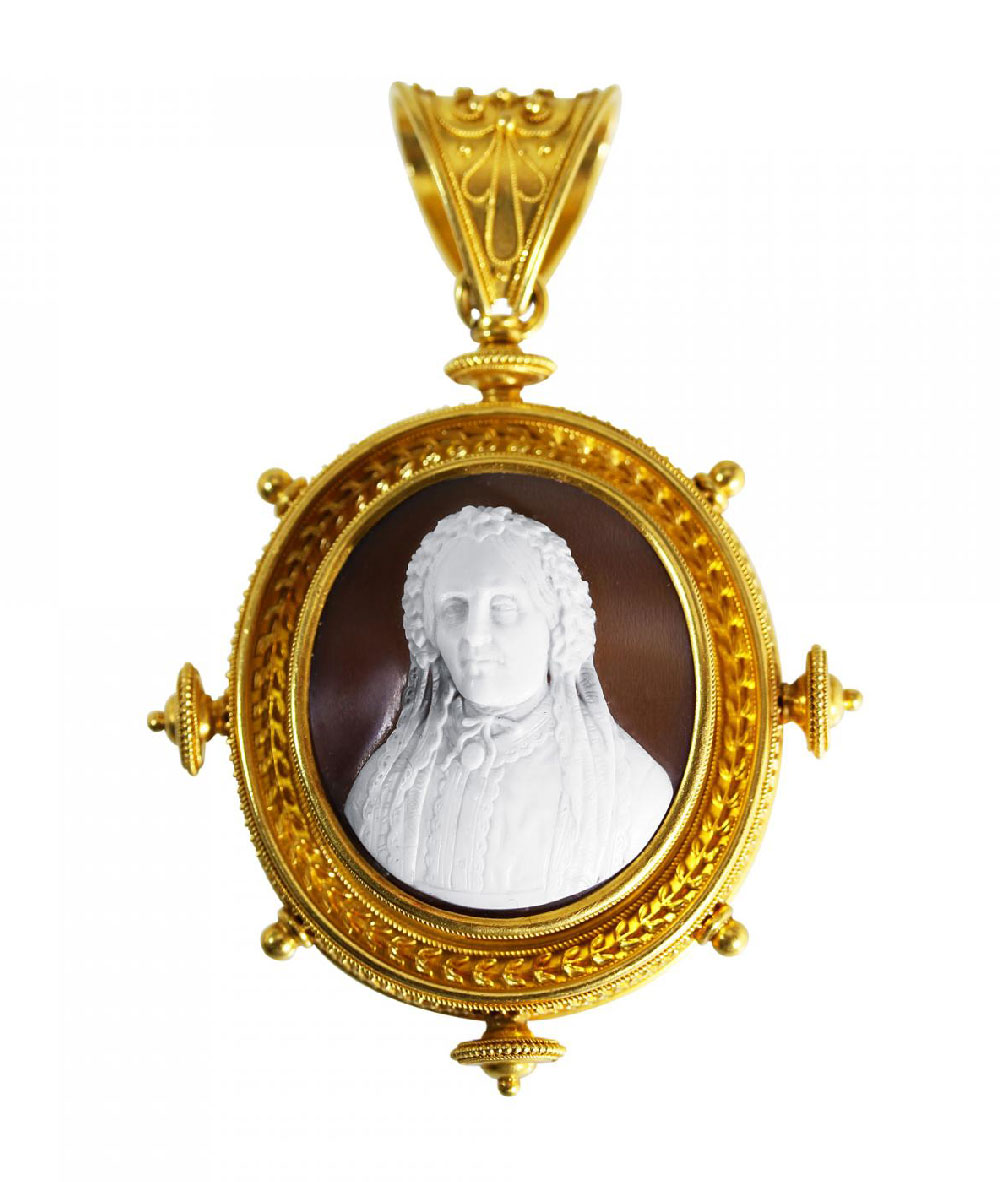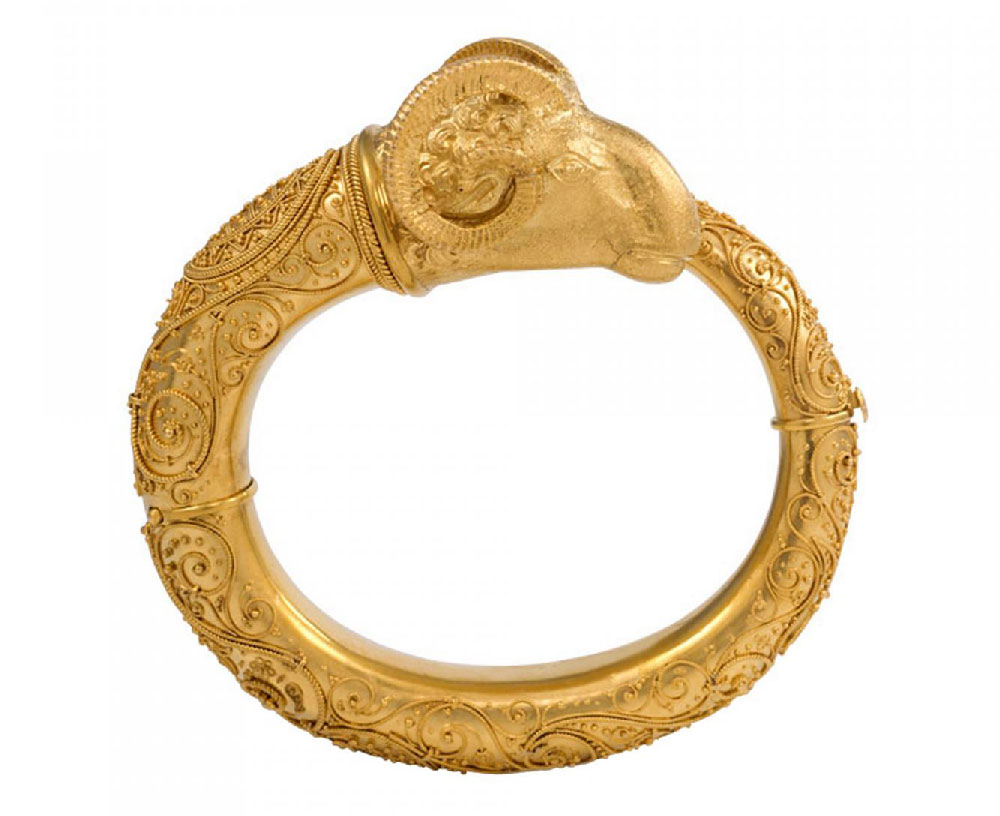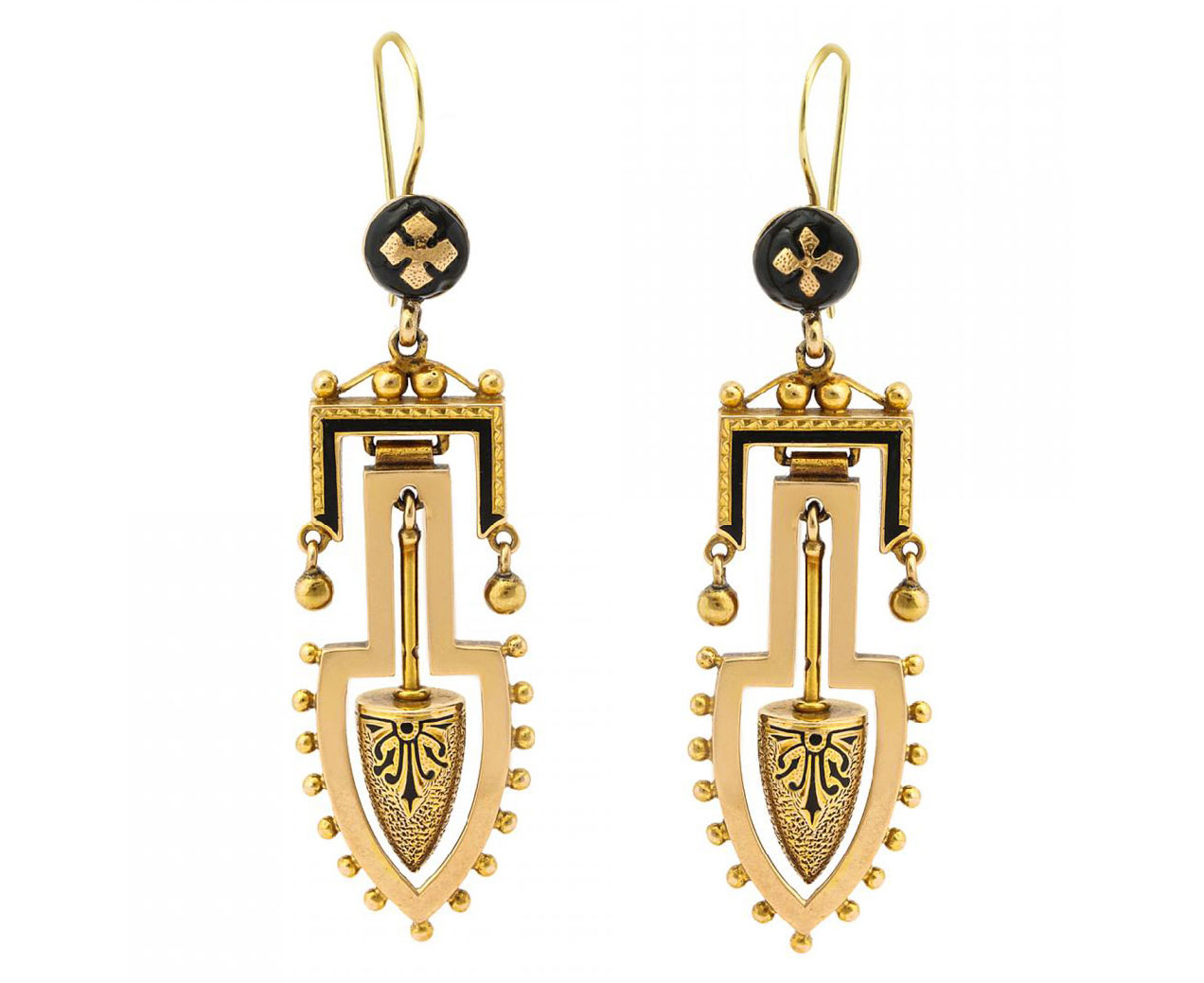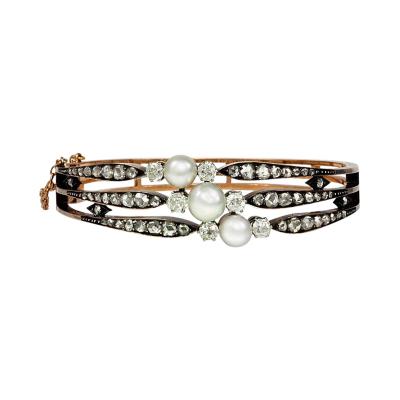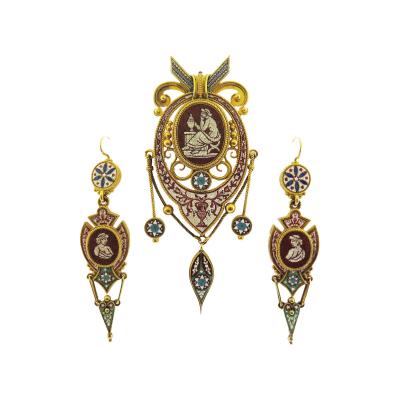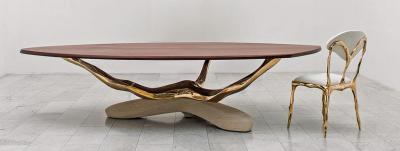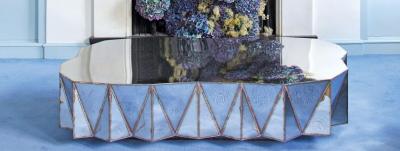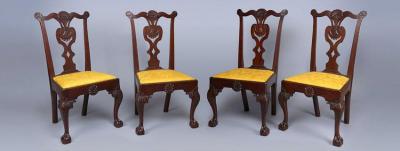Crazy for Classical: Jewelry in the Revival Style
Ancient is modern, old is new. From the nineteenth century onwards, jewelers in the Revival style have found inspiration in the glittering ornaments of antiquity.
“History fuels the imagination,” says Emily Stoehrer, Rita. J. Kaplan and Susan B. Kaplan Curator of Jewelry at the Museum of Fine Arts, Boston, and the organizer of a blockbuster show dedicated to Revival jewelry. “The dazzling jewels in this exhibition were made by designers who found inspiration from the past—reviving and reinterpreting antique styles for a new age.”
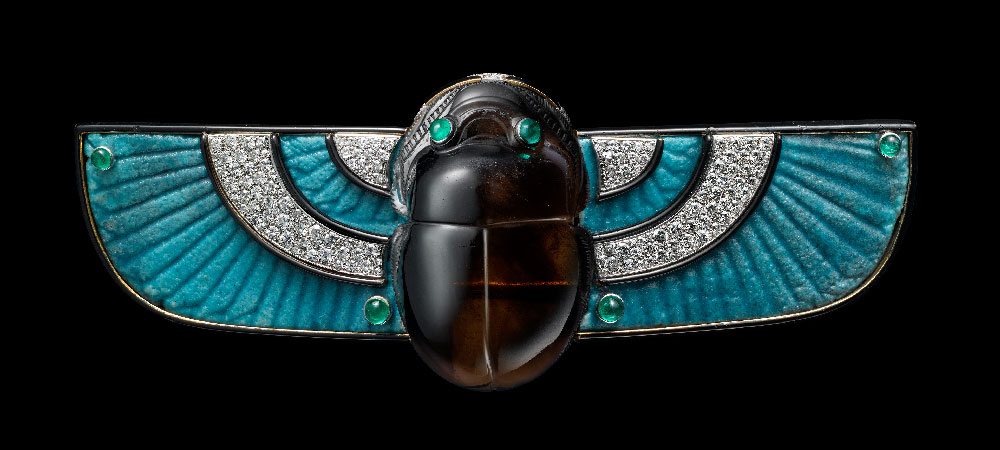
- Scarab brooch, Cartier, England, 1924. Gold, platinum, faience, diamonds, emeralds, smoky quartz, and enamel. Vincent Wulveryck, Cartier Collection © Cartier. Courtesy Museum of Fine Arts, Boston.
The exhibition chronicles two hundred years of Revival jewelry and features eighty objects by jewelers such as Castellani, Tiffany & Co., Cartier and Bulgari. The show is organized along four thematic axes—archeological, Renaissance, Egyptian and Classical—and is anchored by four loans from the Cartier Collection, including Scarab Brooch (1924), an emerald-studded beetle that features ancient faience (glazed ceramic) fragments. As the exhibition makes clear, the mania for Revival jewelry was catalyzed by a series of archaeological digs in the eighteenth and nineteenth centuries, including the 1748 excavation of the ancient city of Pompeii, encased in volcanic ash at the foot of Mount Vesuvius.
“There was suddenly a great interest in how life was lived in earlier classical times,” says Ronald Kawitzky, co-founder, with his wife Sherry, of D.K. Bressler & Co., Inc. (New York), which carries an extensive inventory of antique and estate jewelry. “It was the Age of Enlightenment. People began to travel and explore; they broadened their horizons. You can take the tenor of the times via the jewelry bought and worn.”
|
|
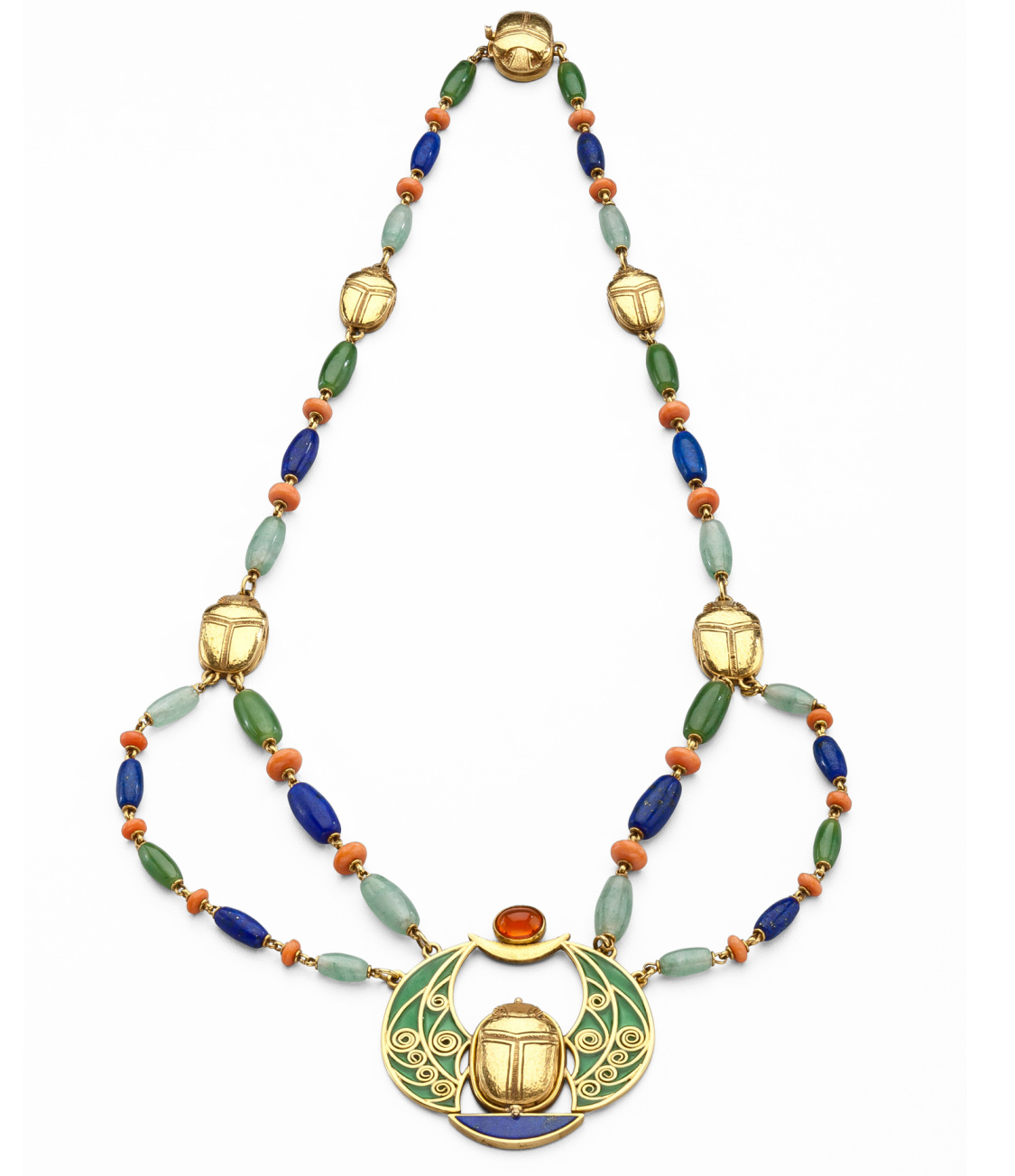
- Scarabs strung on a swag chain, from Leah Gordon Antiques (New York City).
But, is Revival jewelry still in demand? The answer, of course, is that the appeal of antiquity has not diminished in the twentieth-first century. As Stoehrer puts it, “As technology continues to advance and life’s pace continues to accelerate, the traditions of the past, from ancient Egypt to the Renaissance, continue to provoke and inspire.”
One technique favored by makers of Revival jewelry is cameo carving, which denoted wealth and status in ancient Greece and Rome. In this cameo stick pin, from D.K Bressler & Co., Inc., we see a classical maiden with curly locks and a string of pearls. This accessory is meant to flatter the wearer, invoking an idyllic past associated with ancient Rome or Greece. Other examples reinterpret classical motifs to suit a modern sensibility, such as this gold and shell cameo pendant-brooch (ca. 1880), from J.S. Fearnley (Atlanta, Ga.). This ornate, oval-shaped cameo features a woman in nineteenth-century costume (bonnet and dress) encircled by a concave frame adorned with a garland of gold leaves and polished gold rondelles.
Apart from archeological digs, the impetus for the Revival craze was the ritual of the Grand Tour, in which European men of means would travel to the Mediterranean in pursuit of aesthetic succor. “The Victorians were doing all kinds of traveling and were exposed to all sorts of motifs from [antiquity],” says Carrie Imberman, of Kentshire Galleries (New York City), which offers an extensive selection of Etruscan Revival jewelry.
She adds that Revival jewelry is not a homogenous category but encompasses a variety of styles, such as Egyptian, Assyrian, and Etruscan. Ironically, this backward-looking tendency helped modernize the jewelry trade by making pieces available to a larger segment of the population. “During the Victorian Period, jewelry became a little more democratic,” Imberman says. “You didn’t have to be a lord or lady to own it.”
One of the most popular motifs in the repertoire of Revival-style jewelers is the scarab, an armored dung-beetle and symbol of regeneration associated with Ra, the ancient Egyptian sun god. The scarab was thought to ward off malign spirits, and many Revival-style ornaments feature this motif, including an 18 karat gold and plique-à-jour necklace, from Leah Gordon Antiques, that was designed by Marcus & Co. during the first phase of the Egyptian Revival (1880-1890). This ornament features a swarm of scarabs linked by a swag chain with a repeating sequence of lapis lazuli, jade, coral and green hard stone. Hieroglyphic patterns are inscribed on the belly of each insect.
|
|
Apart from the scarab, Revival jewelers have incorporated a variety of animal motifs into their designs. The snake was favored by ancient craftsmen because it signified wisdom and cunning, protecting its wearer from ill fortune, and it has persisted into the modern age: one of the bangles at the MFA is the Bulgari-designed diamond-and-enamel Serpenti Bracelet-Watch, worn by Elizabeth Taylor on the set of the 1962 film Cleopatra. Another animal motif that was popular with Revival jewelers is the ram, featured prominently in this ornate Etruscan bracelet from Kentshire Galleries (New York City). Apart from zoomorphic designs, archeological motifs also found their way into Revival jewelry , as with these gold and enamel urn-shaped pendant earrings from A La Vieille Russie, Inc. (New York City).
“The numerous archaeological discoveries of the period unearthed a goldmine of inspiration and, suddenly, old was new again,” said Sharon Twickler, of A La Vieille Russie. “Wear archaeological revival jewels and you’ll always be in style!”
If the market for antiquity-inspired ornaments is any indication, the Revival movement is far from over.
"Past is Present: Revival Jewelry" continues at the Museum of Fine Arts, Boston, until August 19, 2017.
















